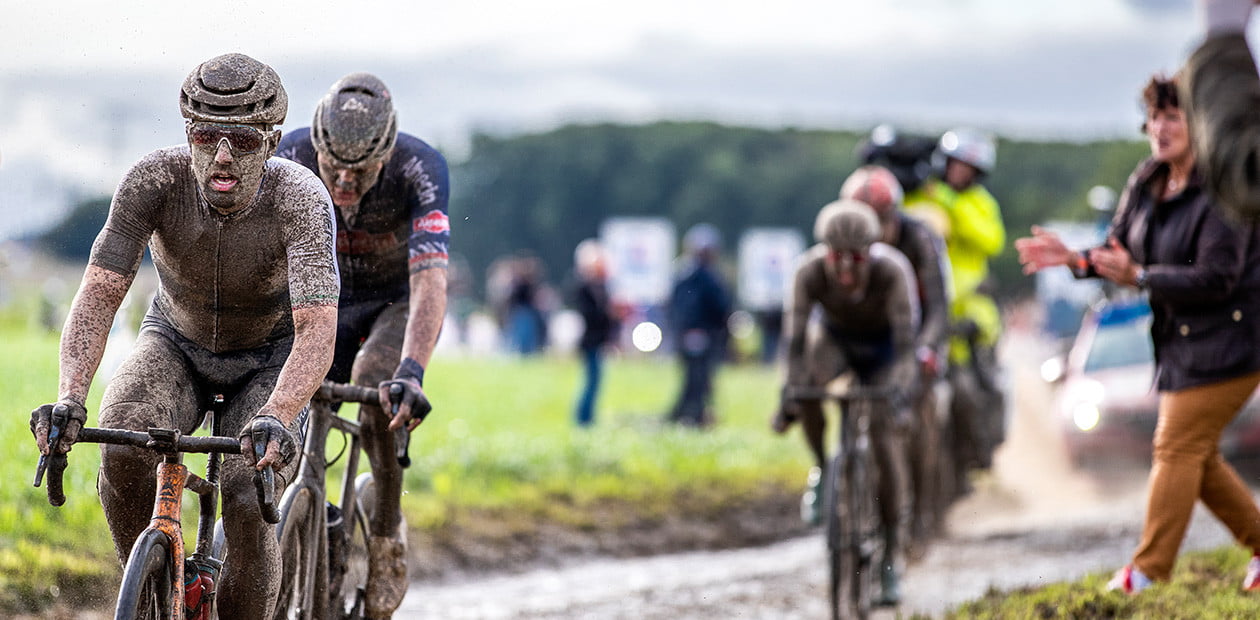First things first: There is no official definition of which races are counted as classics. Historic bike races, in general, are sometimes referred to as classics or semi-classics, but not without controversy.
However, there is no dispute about "The Classics" – one-day races that are more important than all others. They have in common that their first edition took place before the First World War. In the case of the Tour of Flanders, the first edition was in 1913 and could only be repeated once before it had to pause due to the war.
Due to the disagreement in the "classic" designation, the term "5 Monuments of Cycling" became a popular and clear alternative. However, the International Cycling Union UCI (Union Cycliste Internationale) does not include either term in the official regulations.
These are the 5 Monuments of Cycling:
Milan-Sanremo
With the nickname la primavera, the spring, it's not surprising that Milan-Sanremo is traditionally the monument found earliest in the cycling calendar. Sometimes it is also called prima vera corsa, meaning the "first real race."
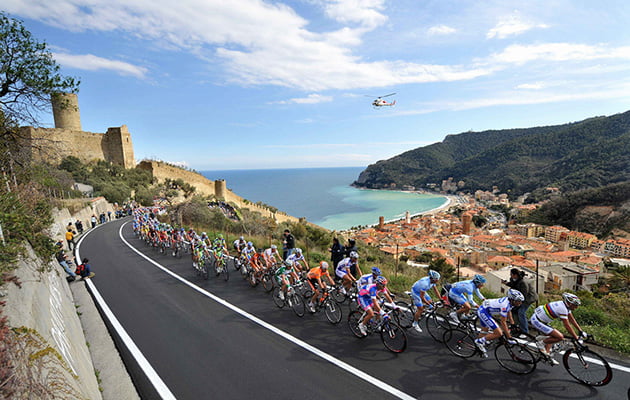
First held in 1907 under the harshest climatic conditions, the organizers were not sure if the race was physically achievable. Out of 33 riders, only 14 could overcome the 286 kilometers to the finish.
Particularly challenging and thus legendary was the 1910 race held during a heavy snowstorm. The riders had to seek refuge in houses along the route repeatedly. Only four of the original 63 riders reached the finish. The winner, Eugène Christophe, had to spend four weeks in the hospital to treat hypothermia and frostbite.
Today, the race is fortunately much safer, although still athletically very challenging. Due to the long flats, the race is considered a matter for sprinters. The next edition of Milano-Samreno will take place on 16 March 2024.
Milan-Sanremo 2023: In the recent edition of the race, Mathieu van der Poel (Alpecin-Deceuninck) secured an impressive solo victory, leaving behind the chasing trio of Filippo Ganna (Ineos Grenadiers), Wout van Aert (Jumbo-Visma), and Tadej Pogačar (UAE Emirates). Pogačar was considered the pre-race favorite, but it was Van der Poel who initiated the decisive attack on the Poggio and became uncatchable.
Van der Poel's victory adds to his impressive record in road racing, which includes wins at the Tour of Flanders, Amstel Gold, Strade Bianche, and a stage win at the Tour de France. The victory is particularly special for Van der Poel as he follows in the footsteps of his grandfather, Raymond Poulidor, who also won La Primavera.
Tour of Flanders
"Vlaanderens mooiste," Flanders' Finest, sometimes resembles more of a folk festival than a cycling event. However, this is due to the high popularity and large crowds of spectators. Throughout the long history of the race, organizers often had great difficulty keeping the enthusiastic fans under control and away from the course.
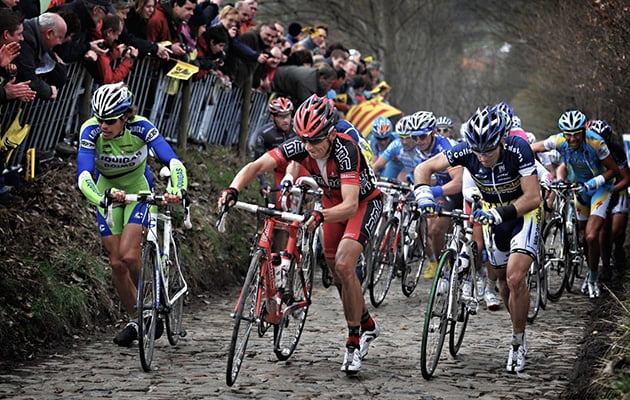
The race, also known as the "Ronde," passes over many key sections, known as Hellingen: short but extremely steep climbs with gradients of up to 20%. Many of the Hellingen also lead over "Kasseien," cobblestones, which further complicates the course.
As a result, the Ronde becomes one of the toughest and most spectacular bike races. Mass sprints and tactical teamwork characterize the sections before the Hellingen to position themselves as best as possible to cross these obstacles. The field thins out over the course of the race until the final specialists engage in a tough individual battle.
The Tour de Flanders 24 will take place on 31 March 2024.
Review 2023: The Tour of Flanders on April 2, 2023, once again featured 19 Hellingen, including the infamous Koppenberg. This one is particularly challenging, featuring cobblestones and a maximum gradient of up to 22%!
The Tour of Flanders 2023 was marred by a mass crash. Triggered by a reckless move by Filip Maciejuk, who caused most riders to fall by rejoining the peloton. A few minutes later, he was disqualified for this action.
However, out of fairness, the peloton continued at a slow pace until the fallen riders caught up. In the end, Tadej Pogačar prevailed with a clear lead, securing his first victory in this monument. This brings him closer to his self-proclaimed goal of winning all 5 monuments, even though he cannot achieve it this year. He still needs Milan-Sanremo, which he couldn't win this year, and Paris-Roubaix. The latter he doesn't even compete in this year.
Paris-Roubaix
Paris-Roubaix, the Hell of the North – this nickname was originally earned because it led through the regions of France devastated and destroyed by the First World War. Nowadays, the infamous cobblestones and sometimes adverse conditions give the nickname further justification. In the 118th edition of the race in 2021, the riders were sometimes so covered in dirt that jersey and faces were hardly recognizable. You should definitely make a note of the next edition of Paris-Roubaix on 7 April 2024!
Paris-Roubaix 2023 took place on April 9. The riders had to cover 256.6 kilometers, with 54.5 kilometers on cobblestones.
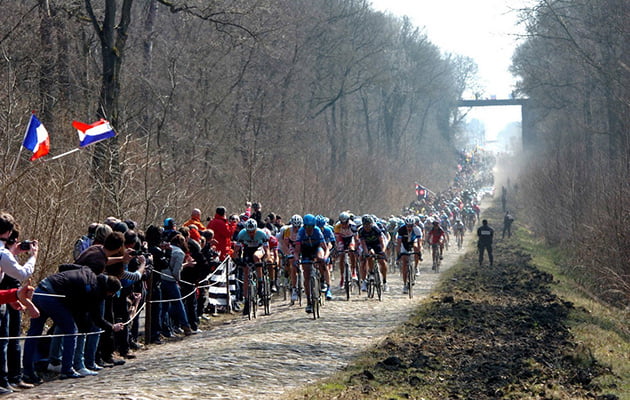
The route of Paris-Roubaix 2023 closely resembled that of the previous year, leading from Compiègne to the Roubaix Velodrome. Again, the infamous pavés were particularly rough and challenging to ride. Dutchman Mathieu van der Poel won his first Paris-Roubaix, securing his third monument after a 15 km solo ride left his rivals behind in the typically eventful race.
Van der Poel belonged to a seven-man leading group that remained with 50 kilometers to go. After John Degenkolb (Team DSM) crashed heavily, and his main competitor Wout van Aert (Jumbo-Visma) had a flat tire, Van der Poel launched an attack on the Carrefour de l'Arbre cobblestone section. He crossed the finish line first, winning the race that was denied to his grandfather, the famous Frenchman Raymond Poulidor. Van der Poel's teammate Jasper Philipsen finished second ahead of Belgian Van Aert.
Liège–Bastogne–Liège
The oldest one-day race still held has truly earned the nickname "la Doyenne", the oldest. At the same time, it is considered a particularly tough race: The Walloon Ardennes offer tough and notorious climbs, which will certainly challenge the riders in the next edition on 21 April 2024!
Also, Liège–Bastogne–Liège 2023 was again one of, if not the, physically most challenging one-day races with a length of 258.5km and approximately 4,200 meters of elevation. This race demanded endurance from climbers.
Belgian cyclist Remco Evenepoel (Soudal Quick-Step) repeated his triumph from the previous year, winning the race as a solo rider. His anticipated duel with Tadej Pogacar did not happen, as Pogacar withdrew due to a wrist injury after a crash. Tom Pidcock secured second place in a hard-fought sprint against Ben Healy and Santiago Buitrago. The race took place in rainy weather on wet roads, making it a real spectacle.
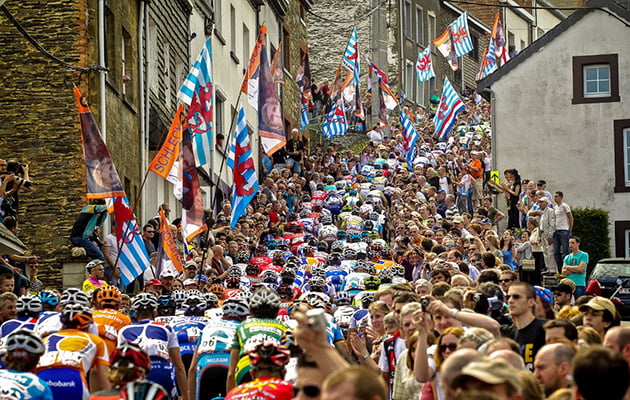
Liège–Bastogne–Liège is not the only significant one-day race: the one-day race "La Flèche Wallonne" or Walloon Arrow, held just four days earlier, as well as the Amstel Gold Race, are held in the same week. Only three riders have achieved the Ardennes Triple – most recently Anna van der Breggen in 2017.
Both "the Arrow" and the Amstel Gold Race are examples of "Classics," as many call them, but they are not counted among the 5 Monuments of cycling.
Lombardy Tour
First held in 1905 and known as "Giro di Lombardia" from 1907-2012, the one-day race is now officially called "Il Lombardia." The Lombardy Tour is traditionally the last major cycling race of a season and the only one of the Monuments not held in spring, earning it the nickname "Race of the Falling Leaves."
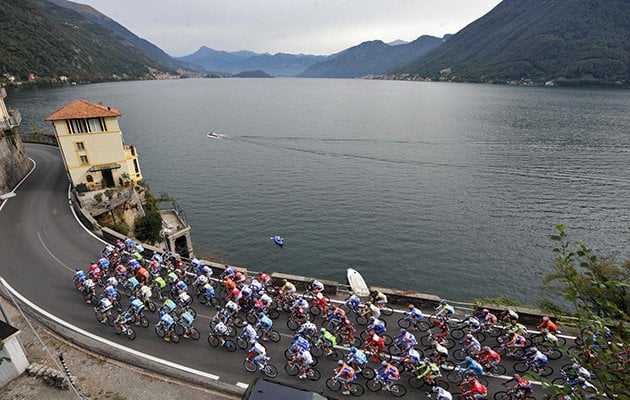
Unlike the first Monument Milan-Sanremo, which is also held in southern Italy, the Lombardy Tour is considered a race for climbing specialists due to many ascents.
Especially the "Muro di Sormano," Wall of Sormano, is one of the toughest sections in road racing worldwide. In just 1.9 kilometers, 344 meters of elevation must be climbed, with an average gradient of 17% and a maximum of 27%.
In 2023, Tadej Pogacar secured his third consecutive victory at the 117th Lombardy Tour, celebrating a perfect season finale. Despite cramps in the finale, the Slovenian triumphed in Bergamo, marking his fifth success in one of the Monuments of cycling. He is now the seventh rider in cycling history to achieve a hat-trick in Lombardy. Whether he can add a fourth victory will be decided at the next edition of Il Lombardia on 12 October 2024!
Classic Hunters & More: What the Pros Consider
An official definition of the Monuments may be lacking, but that doesn't bother the fans: they eagerly follow the toughest and oldest races in cycling. Naturally so, as they are truly spectacular every year! But even the pros look forward to these races, especially the so-called "Classic Hunters."
Indeed, these classic specialists exist: professional cyclists who specialize in one-day races, especially the 5 Monuments. Successful professional teams often rely on specialized riders to meet different challenges.
On the one hand, there is a significant difference between a one-day race and a multi-day stage tour. In one-day races, riders who are both good escape artists and good sprinters are in demand. Usually, riders with relatively lower weight and thus improved aerodynamics have a slight advantage.
Also, the specific challenges of the Monuments, especially the infamous cobblestones, must be trained. Classic hunters, therefore, compete as team captains in the Monuments, but they tend to support in a helper role in stage races.
By the way, three of the five Monuments are also contested in women's cycling. Paris-Roubaix Femmes was originally scheduled to be held in 2020 but, due to the pandemic, the inaugural edition was postponed to 2021. Lizzie Deignan of Team Trek-Segafredo (Women) won the race with a clear lead of over a minute, becoming the first rider to have won all three contested Monuments in women's cycling at least once.

